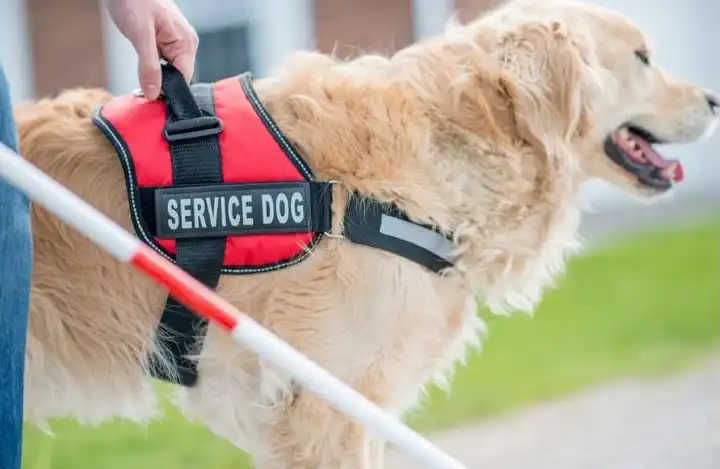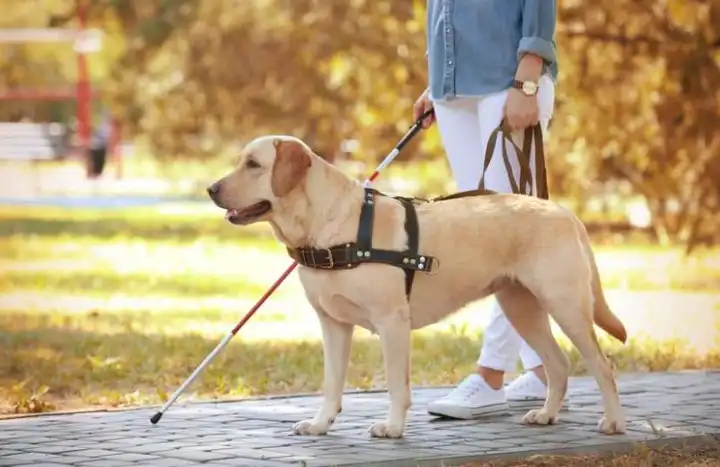How Long to Walk a Dog with Arthritis – Arthritis can be challenging for dogs, causing pain, stiffness, and decreased mobility. However, regular exercise plays a vital role in managing arthritis and improving the overall well-being of arthritic dogs. Choosing the right time of walks for a dog with arthritis requires careful consideration of various factors, including the dog’s condition, fitness level, and individual requirements. By tailoring the walk length and incorporating appropriate exercises, owners can help their arthritic dogs maintain joint mobility, manage weight, and enhance their quality of life.

Assessing Your Dog’s Condition
Assessing your dog’s condition is crucial in determining the appropriate walk length for a dog with arthritis. Understanding the dog’s specific needs and the severity of their arthritis will help you tailor the exercise routine to suit their condition. Here are important considerations when assessing your dog’s condition:
- Consulting with a Veterinarian: To accurately assess your dog’s condition, it is essential to consult with a veterinarian. They will conduct a thorough examination, which may include joint palpation, mobility assessment, and potentially imaging tests like X-rays. The veterinarian’s expertise will provide valuable insights into the type and severity of arthritis your dog is experiencing.
- Diagnosis and Understanding Arthritis Type: The veterinarian will diagnose the specific type affecting your dog. Understanding the underlying cause of arthritis will help determine the appropriate treatment plan and exercise regimen.
- Evaluating the Severity and Progression of Arthritis: The veterinarian will assess the severity and progression of arthritis. This includes evaluating joint inflammation, pain levels, range of motion, and associated complications. The severity of arthritis can range from mild discomfort to severe pain and limited mobility. This assessment will guide you in tailoring the walk length to suit your dog’s specific condition.
- Considering the Dog’s Age, Breed, and Overall Health: Age, breed, and overall health are essential factors to consider when assessing your dog’s condition. Older dogs tend to be more prone to arthritis, while certain species may have a higher predisposition to the disease. Additionally, underlying health conditions may affect the dog’s ability to engage in physical activity. Understanding these factors will help you determine the appropriate level of exercise and adapt the walk length accordingly.
- Observing Symptoms and Behaviors: As the owner, you are uniquely positioned to monitor your dog’s symptoms and behaviors. Look for signs of joint pain, stiffness, limping, difficulty rising, or reluctance to engage in physical activity. Keep track of changes in your dog’s behavior, such as decreased mobility or increased restlessness. This information will provide valuable insights into the dog’s comfort level and guide you in determining the suitable walk length.
- Monitoring Response to Medications or Therapies: If your dog is on medications or undergoing other treatments for arthritis, closely monitor their response. Certain medications may alleviate pain and inflammation, improving the dog’s ability to engage in exercise. Assess how the dog’s mobility and comfort levels change after starting or adjusting the treatment. This information will help you customize the walk length to optimize their well-being.
You can accurately determine the appropriate walk length by thoroughly assessing your dog’s condition, consulting with a veterinarian, and considering their age, breed, overall health, and treatment response. This assessment ensures that the exercise routine aligns with the dog’s capabilities, promotes joint health, and minimizes discomfort. Regular communication with the veterinarian and monitoring the dog’s condition will allow for adjustments in the exercise plan.
Benefits of Walking for Dogs with Arthritis

Walking offers numerous benefits for dogs with arthritis, despite their condition. Regular walks can positively impact their joint health, well-being, and quality of life. Let’s explore the benefits of walking for dogs with arthritis in more detail:
Maintaining Joint Mobility and Flexibility
Walking helps keep the joints mobile and flexible, preventing them from becoming stiff and reducing the risk of further deterioration. The gentle movement stimulates the production of synovial fluid, which lubricates the joints and eases friction, resulting in improved mobility.
Strengthening Muscles to Support the Affected Joints
Walking engages the muscles surrounding the affected joints, helping to strengthen them. Stronger muscles provide better support to the joints, alleviating some of the stress and reducing pain. This added support can enhance stability and improve the dog’s ability to move comfortably.
Managing Weight to Alleviate Stress on the Joints
Arthritis often leads to decreased activity levels, which can contribute to weight gain in dogs. Walking is an excellent low-impact exercise that helps manage weight and prevent obesity. Keeping a healthy weight is vital for dogs with arthritis as it reduces the strain on the joints, minimizes pain, and slows down the passage of the condition.
Promoting Cardiovascular Health
While arthritis primarily affects the joints, it is essential to consider the dog’s overall health. Walking serves as a cardiovascular exercise that benefits the heart and circulatory system. It improves blood circulation, strengthens the heart, and improves cardiovascular fitness.
Enhancing Mental Stimulation
Dogs with arthritis may experience boredom or frustration due to decreased physical activity. Going for walks provides mental stimulation and sensory enrichment. They can examine their surroundings, sniff other scents, and engage with the environment, positively impacting their mental well-being.
Promoting Weight-Bearing Exercise
Walking is a weight-bearing exercise, meaning the dog’s limbs bear their weight as they move. This type of training is vital for keeping bone density and strength. It also helps improve muscle tone, joint stability, and overall balance, which is essential for dogs with arthritis.
Bonding and Socialization
Walking allows owners to bond with their dogs and strengthen their relationships. It allows for quality time together, promoting a sense of companionship and trust. Walking in public areas or meeting other dogs on walks can also contribute to their socialization, enhancing their overall well-being.
Pain Management and Improved Mood
Engaging in regular exercise, including walking, can help manage pain associated with arthritis. It stimulates the release of endorphins, natural pain-relieving hormones that can boost the dog’s mood and relieve pain. More active dogs tend to exhibit improved mental and emotional well-being.
Routine and Structure
Dogs thrive on routine and structure, and incorporating regular walks into their daily schedule provides predictability and stability. It gives them a sense of purpose and establishes a healthy routine that promotes overall wellness.
Improved Overall Quality of Life
When dogs with arthritis engage in regular walks, they experience a range of physical, mental, and emotional benefits. Maintaining joint mobility, muscle strength, and a healthy weight can significantly enhance their overall quality of life.
It is important to note that the duration and intensity of walks should be tailored to the individual dog’s condition, considering their age, overall health, and the severity of arthritis. Consulting with a veterinarian and closely monitoring the dog’s response to exercise will help ensure that walks provide maximum benefits while minimizing discomfort.
Tailoring the Walk Duration
Tailoring the duration of walks is crucial for dogs with arthritis. Finding the right balance between providing exercise and minimizing discomfort is vital to ensuring a beneficial and comfortable walking experience. Here are essential considerations when tailoring the walk duration for a dog with arthritis:
Starting with Short, Frequent Walks
When beginning an exercise routine for an arthritic dog, it’s essential to start with short walks. This allows the dog’s body to adapt to the increased activity gradually. Begin with manageable walks for the dog, even if they are just a few minutes long. Shorter walks help minimize the risk of overexertion and excessive joint stress.
Gradually Increasing the Duration
As the dog’s tolerance and fitness level improves, the duration of the walks can be gradually increased. Monitor the dog’s response to exercise and observe any signs of discomfort or fatigue. Increase the duration in small increments, ensuring the dog remains comfortable throughout the walk and finding the right balance between challenging the dog’s physical abilities and avoiding excessive strain.
Listening to the Dog’s Cues
Paying close attention to the dog’s cues during the walk is crucial. Dogs with arthritis may exhibit discomfort, such as limping, lagging, or reluctance to continue. Observe their behavior and body language. If the dog shows signs of pain or fatigue, it’s important to respect their limits and shorten the walk accordingly. Each dog is unique, and understanding their cues will help you tailor the duration to their specific needs.
Considering rest Breaks
Incorporating rest breaks during walks is essential for arthritic dogs. Allow the dog to take quick breaks to rest and recover. This gives their joints a chance to recover from the impact of walking and reduces the risk of overexertion. During rest breaks, observe the dog’s behavior and assess its comfort level before continuing the walk.
Adjusting Based on Daily Variations
Arthritis symptoms can vary day by day. Some days, the dog may show higher levels of discomfort or stiffness, while others may feel more relaxed. It’s essential to be flexible with the walk duration, adjusting it based on the dog’s condition on a given day. Be prepared to shorten or lengthen the walk as needed to accommodate any fluctuations in symptoms.
Consulting with a Veterinarian
Consulting with a veterinarian familiar with the dog’s arthritis condition is essential. They can guide tailoring the walk duration based on the dog’s specific situation and response to exercise. The veterinarian may recommend particular guidelines or adjustments based on the severity of arthritis, the dog’s age, breed, and overall health.
By tailoring the duration of walks for a dog with arthritis, you can give them the right amount of exercise to maintain joint mobility and overall well-being. Starting with short walks and gradually increasing the duration while paying close attention to the dog’s cues ensures a comfortable and beneficial walking experience. Being responsive to the dog’s needs and consulting with a veterinarian will help you customize the walk duration to suit their specific condition and optimize their quality of life.
Factors to Consider When Determining Walk Length

When determining the length of walks for a dog with arthritis, several factors should be considered. Each dog is unique, and understanding these factors will help customize the walk length to suit the specific needs and conditions of the arthritic dog. Let’s explore the key factors to consider:
Dog’s Age and Fitness Level
Age and fitness level significantly determine the appropriate walk length. Younger dogs may have higher energy levels and stamina, allowing longer walks. Older dogs or those with more advanced arthritis may require shorter walks to prevent overexertion and excessive joint strain. Assessing the dog’s capabilities and adjusting the walk length is essential.
The Severity of Arthritis Symptoms
The severity of arthritis symptoms can vary among dogs. Some may experience mild discomfort, while others have more pronounced pain and stiffness. Dogs with severe arthritis may require shorter walks to prevent worsening symptoms. Pay close attention to the dog’s behavior during and after hikes, looking for any signs of increased pain or discomfort. Adjust the walk length to remain within the dog’s comfort zone.
Weather Conditions and Temperature Sensitivity
Weather conditions, particularly extreme heat or cold, can impact the dog’s comfort and joint health. Arthritic dogs may be more sensitive to temperature changes, and excessive heat or cold can exacerbate their symptoms. During hot weather, walking during cooler times of the day is advisable to prevent overheating. Consider using protective clothing or booties in colder temperatures to keep the dog warm and minimize joint stiffness.
Observation of the Dog’s Behavior and Response
During the walk, closely observe the dog’s behavior and response to exercise. Look for signs of discomfort, such as limping, favoring certain limbs, or reluctance to continue walking. These signs may indicate that the dog is experiencing increased joint pain or fatigue. Take note of the dog’s energy levels and adjust the walk length accordingly to ensure a comfortable and enjoyable experience.
Consultation with a Veterinarian
Consulting with a veterinarian is crucial in determining the appropriate walk length for a dog with arthritis. They can provide professional advice based on the specific condition of the dog
The veterinarian may evaluate aspects such as the dog’s overall health, the progression of arthritis, and any other underlying medical conditions that may impact exercise tolerance. Collaborating with the veterinarian ensures that the walk length aligns with the dog’s needs and helps avoid potential complications.
Individual Dog’s Preference and Tolerance
Each dog has its exercise tolerance, and respecting their individual preferences and limitations is essential. Some dogs may indicate when they have reached their limit by slowing down, sitting, or showing signs of fatigue. Pay attention to these cues and adjust the walk length to avoid pushing the dog beyond its comfort level.
By carefully considering these factors, you can determine the optimal walk length for a dog with arthritis. It is always recommended to start with shorter walks and gradually increase the duration as the dog’s tolerance and fitness level improve. Remember, the purpose is to provide the dog with relaxing and enjoyable walking knowledge that helps their joint health and overall well-being. Regularly monitoring the dog’s response to exercise and consulting with a veterinarian will help ensure that the walk length remains appropriate as the dog’s arthritis progresses.
Monitoring Your Dog During the Walk
Ensuring their convenience and well-being is vital, especially when they have arthritis. By observing their behavior and assessing any discomfort, you can make real-time adjustments to the walk to accommodate their needs. Here are vital considerations when monitoring your dog during the trek:
- Observing Signs of Discomfort or Pain: Keep a close eye on your dog for any discomfort or pain during the walk. Look for limping, favoring certain limbs, or reluctance to put weight on specific joints. These signs may indicate increased joint pain or inflammation. If you notice any symptoms, taking them seriously and modifying the walk to prevent further discomfort is essential.
- Paying Attention to Limping or Reluctance to Continue: Arthritic dogs may experience episodes of limping or a noticeable change in their gait during a walk. This can indicate that they are experiencing increased pain or fatigue in a particular joint. If you observe any limping or reluctance to continue walking, it’s essential to respect their limits and provide them with a break or shorten the walk to prevent further strain.
- Allowing for Breaks and Providing Water: Dogs with arthritis may require more frequent breaks during walks. Pay attention to signs of fatigue, such as slowing down, lagging, or excessive panting. Allow the dog to rest and recover during breaks, giving them access to fresh water to stay hydrated. These breaks allow the dog’s joints to relax and alleviate stress from prolonged activity.
- Monitoring Breathing and Energy Levels: Keep an eye on your dog’s breathing and energy levels throughout the walk. Arthritic dogs may tire more efficiently, and excessive exertion can exacerbate their discomfort. If you notice heavy or difficult breathing, excessive panting, or a significant decrease in energy, adjusting the pace, taking a break, or shortening the walk is essential.
- Walking the Walk Behavior: Each dog is unique, and their behavior during the walk can step valuable video insights into their comfort level. Observing signs of agitation, anxiety, or increased restlessness may indicate that the dog is experiencing discomfort. Conversely, if the dog appears relaxed, engaged, and enjoys the walk, the walk is comfortable and benefits from the exercise. Use their behavior as a guide and make adjustments accordingly.
- Noticing Changes in Appetite or Sleep Patterns: In addition to monitoring your dog during the walk, walk attention to their appetite and sleep patterns. Changes in appetite or disturbances in their sleep may be indicative of increased pain or discomfort. If you see substantial differences in these behaviors, it’s vital to consult with a veterinarian to address any underlying problems.
Closely monitoring your dog during the walk ensures their comfort, minimizes discomfort, and prevents overexertion. Being attentive to signs of pain, limping, or reluctance to continue allows you to adjust the walk duration or intensity immediately. Frequent breaks and access to water help keep the dog hydrated and provide necessary rest for their joints.
Incorporating Gentle Exercises
Incorporating gentle exercises is helpful for dogs with arthritis. This training should be low-impact and tailored to the respective dog’s disease. Here are some examples of gentle exercises that can be incorporated:
- Swimming: it is excellent low-impact training for dogs with arthritis. The water decreases pressure while delivering resistance for muscle strengthening. It allows for a complete spectrum of activity without the effect of weight-bearing exercises. It is essential to ensure proper supervision and safety measures when instructing a dog to swim, especially if they are new to it.
- Hydrotherapy: Hydrotherapy involves exercises performed in a controlled aquatic environment. It can include walking on an underwater treadmill or performing specific movements in a warm water pool. The water delivers buoyancy and keeps the dog’s weight, relieving joint strain. Hydrotherapy can assist in enhancing the expected range of activity, muscle strength, and general mobility.
- Range-of-Motion Exercises: It involve gently moving the dog’s joints through its full range of motion. This training supports joint flexibility, relieves immobility, and improves joint function. They can include gentle stretches, flexion and extension movements, and rotations of the involved joints. Range-of-motion activities should be performed slowly and within the dog’s comfort level to avoid causing any pain or discomfort.
- Balance and Proprioception Exercises: Balance and proprioception exercises focus on improving the dog’s body awareness and stability. They assist in maintaining the muscles of the joints and enhance balance, which can help canines with arthritis. These exercises include standing on unstable surfaces, such as balance pads or wobble boards, or performing controlled weight shifts from one leg to another. It is essential to start with easy exercises and gradually raise the problem as the dog evolves more relaxed and confident.
- Controlled Leash Walking: Controlled leash walking allows for controlled exercise while minimizing joint stress. A harness or an adequately fitted walking aid can distribute pressure more evenly and reduce strain on specific joints. Walking on a soft surface like grass or dirt can provide additional cushioning and minimize impact. Maintaining a slow and steady pace is essential, allowing the dog to set the speed and take breaks as needed.
- Massage and Passive Range-of-Motion Exercises: Massage can relieve relaxation and pain and stimulate blood circulation in the joints and strengths. Gentle massaging and passive range-of-motion exercises performed by the owner or a professional therapist can help relieve muscle tension, reduce stiffness, and improve joint mobility. This training should be done carefully and within the dog’s comfort level.
- Environmental Enrichment Activities: Engaging in interactive play and puzzle games can provide mental stimulation while incorporating gentle movement. Activities such as hiding treats or toys for the dog to find, playing with puzzle toys, or teaching them new commands can keep their mind active while incorporating gentle physical exercise. These activities can be adjusted to the dog’s abilities and tailored to their interests.
It is essential to start slowly and gradually increase the intensity or duration of gentle exercises as the dog’s comfort and fitness level improves.
Walking Surfaces for Arthritic Dogs
Choosing suitable walking surfaces is crucial for the comfort and joint health of arthritic dogs. Suitable surfaces can minimize the effect and provide support, while unsuitable surfaces can worsen joint pain and pain. Here are factors to consider when selecting walking surfaces for dogs with arthritis:
- Even and Supportive Surfaces: Opt for even walking surfaces that provide good support. Uneven surfaces like rocky paths or cobblestones can increase the risk of tripping or placing extreme pressure on the joints. Smooth and level surfaces like sidewalks, paved paths, or well-maintained trails are ideal. These surfaces offer stability and ease stress.
- Avoiding Hard Surfaces: Hard surfaces like concrete or asphalt can transmit more effect to the joints, potentially causing increased discomfort for dogs with arthritis. These surfaces lack shock absorption and can contribute to joint stress. It is best to avoid prolonged walking on such hard surfaces. If walking on hard surfaces is unavoidable, consider using padded booties or protective paw wax to cushion and reduce impact.
- Grass and Natural Surfaces: Walking on grass or natural surfaces can benefit arthritic dogs by offering cushioning and shock absorption. The softness of grass can ease the effect on the joints while delivering a more relaxed walking experience. However, be cautious of uneven terrain, hidden obstacles, or areas with excessive moisture that can make the surface slippery.
- Rubberized or Soft Track Surfaces: Rubberized tracks or surfaces designed for sports activities can provide excellent cushioning and support for arthritic dogs. These surfaces are designed to absorb crashes and ease the stress on joints. Walking on rubberized or soft tracks can be extremely helpful for dogs with more severe arthritis or those needing extra joint protection.
- Non-Slip Surfaces: Arthritic dogs may have reduced stability and balance, creating them more inclined to slips and falls. Using non-slip surfaces can assist in controlling accidents and injuries. Look for walking surfaces that offer good traction, such as textured concrete or rubberized materials. This allows the dog to maintain their footing and underestimates the risk of slips.
- Adapting to Environmental Conditions: Consider the environmental conditions when choosing walking surfaces. Wet or icy surfaces can be slippery and increase the risk of falls. Choose alternative characters or postpone the walk until conditions improve. Ensuring a safe walking surface is essential to prevent additional stress or injury to arthritic joints.
By selecting appropriate walking surfaces, you can assist in minimizing the effect and deliver a more relaxed walking experience. Supportive surfaces like smooth sidewalks or grassy areas help reduce joint stress. Avoiding hard surfaces and opting for non-slip materials further enhance the safety and comfort of the walk. By walking to environmental conditions and being mindful of potential hazards, you can confirm that the walking surface promotes joint health and overall well-being for your arthritic dog.
Time of Day for Walking
Choosing the right time of day for walking is essential for arthritic dogs, as it can significantly impact their comfort and overall well-being. Considering temperature, weather conditions, and the dog’s preferences will help ensure a pleasant and safe walking experience. Here are key considerations when determining the time of day for walking arthritic dogs:
- Cooler Times of the Day During Hot Weather: Dogs with arthritis can be more sensitive to heat and high temperatures. During hot weather, it is advisable to schedule walks during the more excellent parts of the day, such as early morning or late evening. Walking when lower temperatures help prevent overheating and reduce the risk of heat-related complications. Hot pavement or surfaces can also be uncomfortable for arthritic paws, so walking during more excellent times minimizes exposure to hot surfaces.
- Avoiding Extreme Cold Temperatures: Just as hot weather can be challenging for arthritic dogs, extreme cold temperatures can also exacerbate joint stiffness and discomfort. When temperatures drop significantly, protecting your dog from the cold is essential. Use doggy boots or protective clothing to keep their paws and body warm. Shortening the walk or walks indoor exercise alternatives may prevent further joint strain if it’s extremely cold.
- Considering Temperature Sensitivity: Arthritic dogs may have varying degrees of temperature sensitivity. Some dogs may be more tolerant of heat, while others may be more affected by cold temperatures. Observe your dog’s behavior and response to weather conditions to understand their preferences and sensitivities. This will help you determine the most suitable time of day for walking based on their comfort level.
- Adapting to Environmental Factors: Humidity, wind, and air quality can also influence the dog’s comfort during walks. High humidity can make dogs feel more fatigued, while windy conditions may increase joint stiffness. Additionally, poor air quality, such as during periods of high pollution or pollen counts, can worsen respiratory issues and impact overall well-being. Consider these environmental factors when choosing the time of day for walking.
- Individual Dog’s Energy Levels: Dogs have different energy patterns throughout the day. Some dogs may be more active and energetic in the morning, while others may have more energy in the afternoon or evening. Observe your dog’s energy levels and behavior during different times of the day to determine when they are most alert and ready for physical activity. Aligning the walk time with their natural energy levels can make walking more enjoyable for them.
- Consistency and Routine: Establishing a consistent walking routine can benefit dogs with arthritis. Surface helps create a sense of predictability and structure, which can be comforting for arthritic dogs. Dogs often thrive on routine, so setting a regular time for walks, whether in the morning or evening, can provide stability and familiarity.
By considering temperature, weather conditions, the dog’s temperature sensitivity, and individual energy levels, you can determine the optimal time for walking your arthritic dog. Prioritizing their comfort and well-being ensures the walk is walkable, minimizes discomfort, and promotes joint health. Being flexible and adaptive to environmental factors further enhances the safety and enjoyment of the walking experience.
The Importance of Warm-up and Cool-down
Let’s explore why they are important:
The Importance of Warm-up
- Enhanced Blood Flow: This delivers oxygen and nutrients, organizing the tissues for movement. It also boosts the muscles’ temperature, causing them more pliable and reducing the risk of strains or tears.
- Increased Joint Lubrication: During a warm-up, the body releases synovial fluid, which acts as a lubricant for the joints. This fluid helps reduce friction and allows for smoother and more comfortable movement. Optimal joint lubrication is especially crucial for dogs with arthritis, as it helps minimize discomfort and stiffness.
- Improved Flexibility and Range of Motion: This enhanced flexibility allows more unrestricted movement and decreases the likelihood of joint harm. It also helps dogs with arthritis maintain better mobility and functional abilities.
- Activation of Supporting Muscles: Engaging these muscles improves their strength and stability, reducing the strain on the arthritic joints. Strengthening these supporting muscles can help alleviate pain and prevent further damage to the affected joints.
The Importance of Cool-down
- Gradual Return to Resting State: It helps lower the heart, respiration, and body temperature. This gradual transition is crucial for controlling sudden blood pressure drops and dizziness, which can happen if the movement stops short.
- Reduction of Muscle Stiffness and Soreness: Cool-down exercises help prevent post-exercise strength immobility and soreness. By aiding in waste deduction and stimulating circulation, cool-down practices contribute to faster muscle recovery.
- Relaxation and Stress Reduction: It allows their body and mind to unwind after physical exertion. This relaxation can help reduce stress and anxiety.
- Injury Prevention: Cool-down exercises help prevent injuries due to abrupt bodily movement. By gradually reducing the power of practice, the dog’s body can adjust and recover more effectively. It also allows the cardiovascular system to produce to its normal state slowly.
Seeking Professional Guidance
For owners of arthritic dogs, seeking professional guidance is highly recommended. Consulting with a veterinary professional or a canine rehabilitation specialist can provide valuable insights and personalized recommendations for managing arthritis through exercise. These professionals can tailor an exercise plan to address the specific needs of the arthritic dog, taking into consideration the severity of arthritis, the dog’s condition, and any additional health concerns. They may also suggest alternative therapies or assistive devices to support the dog’s mobility and overall well-being.
Monitoring and Adjusting the Exercise Routine
Regular monitoring and periodic reassessment of the dog’s condition and response to exercise are crucial. Arthritis is a progressive condition, and the dog’s symptoms may change. Observing any changes in the dog’s behavior, mobility, or comfort during and after walks is essential in ensuring that the exercise routine remains appropriate. If necessary, modifications can be made to the walking duration or intensity. Consulting with the veterinarian for guidance on adjusting the exercise routine based on the dog’s changing needs is recommended.
Additional Tips for Managing Arthritis in Dogs
There are several tips to manage effectively:
- Provide Comfortable Resting Areas: Create comfortable resting areas for your arthritic dog, such as orthopedic beds or padded mats. These surfaces help relieve joint stress, delivering a supportive and eased space for them to rest and relax.
- Weight Management: It is vital for arthritic dogs, as extra weight strains their joints. Perform a veterinarian to establish a proper diet and feeding plan to support your dog in achieving and maintaining optimal weight. This can significantly decrease joint stress and enhance overall mobility.
- Joint Supplements: These supplements can assist in supporting joint health, decrease rash, and relieve discomfort with arthritis. The veterinarian can suggest appropriate supplements and guide dosage.
- Medications and Pain Management: Sometimes, your veterinarian may prescribe medications to control pain and rash in arthritic dogs. It is vital to follow their instructions and administer medications as directed. Regular check-ups with the veterinarian can assist in observing the dog’s response to drugs and changing the treatment method if necessary.
- Physical Therapy and Rehabilitation: Think of performing with a canine rehabilitation specialist or physical therapist who can develop a customized training and treatment program for your arthritic dog. Physical therapy methods, such as hydrotherapy, laser therapy, or therapeutic training, can help enhance joint mobility, relieve pain, and enhance overall muscle strength.
- Assistive Devices: assistive devices may be beneficial. Ramps or steps can assist them in navigating stairs or high surfaces more easily. Supportive braces or harnesses can provide additional stability and joint support during walks or daily activities. Consult a veterinarian or specialist to determine whether these devices would benefit your dog’s clear conditions.
- Environmental Modifications: Make necessary transformations in your home environment to adjust your arthritic dog. This may have to provide non-slip surfaces on floors, use increased food and water bowls to ease tension on the neck and shoulders and underestimate the need for stairs or obstacles that may be challenging for them to navigate.
- Regular Veterinary Check-ups: Schedule to observe your dog’s arthritis condition, adjust treatment plans, and address any problems or differences in their symptoms. It care is vital for controlling arthritis effectively and enhancing health.
- Consider Alternative Therapies: These may have acupuncture, massage, cold laser therapy, or herbal remedies. It is essential to confer with a competent expert experienced in these therapies to ensure their safety and efficacy for your dog’s condition.
- Mental Stimulation and Enrichment: Engage your arthritic dog in mental stimulation activities to keep its mind active. Puzzle toys, interactive games, and training exercises that don’t strain their joints excessively can provide mental enrichment and help maintain their cognitive abilities.
By implementing these additional tips, you can provide comprehensive care and support for your arthritic dog. Each dog’s condition is unique, so it is important to tailor these strategies to your dog’s needs and consult veterinary professionals for personalized guidance. Combining these approaches with exercise, appropriate medications, and regular veterinary care can help manage arthritis effectively and enhance your dog’s overall quality of life.
Conclusion
How Long to Walk a Dog with Arthritis – Walking a dog with arthritis requires careful consideration and a tailored approach. By assessing the dog’s condition, considering various factors, and monitoring their response to exercise, owners can determine the appropriate duration of walks to maximize the benefits while minimizing discomfort.
Incorporating gentle exercises, selecting suitable walking surfaces, and implementing proper warm-up and cool-down routines further, enhance the effectiveness of the walking pattern. Seeking professional guidance, monitoring the dog’s condition, and making necessary adjustments ensure that the exercise plan remains optimal as the dog’s arthritis progresses. By managing arthritis through appropriate exercise, owners can help their arthritic dogs maintain joint mobility, manage weight, and enjoy an improved quality of life.



